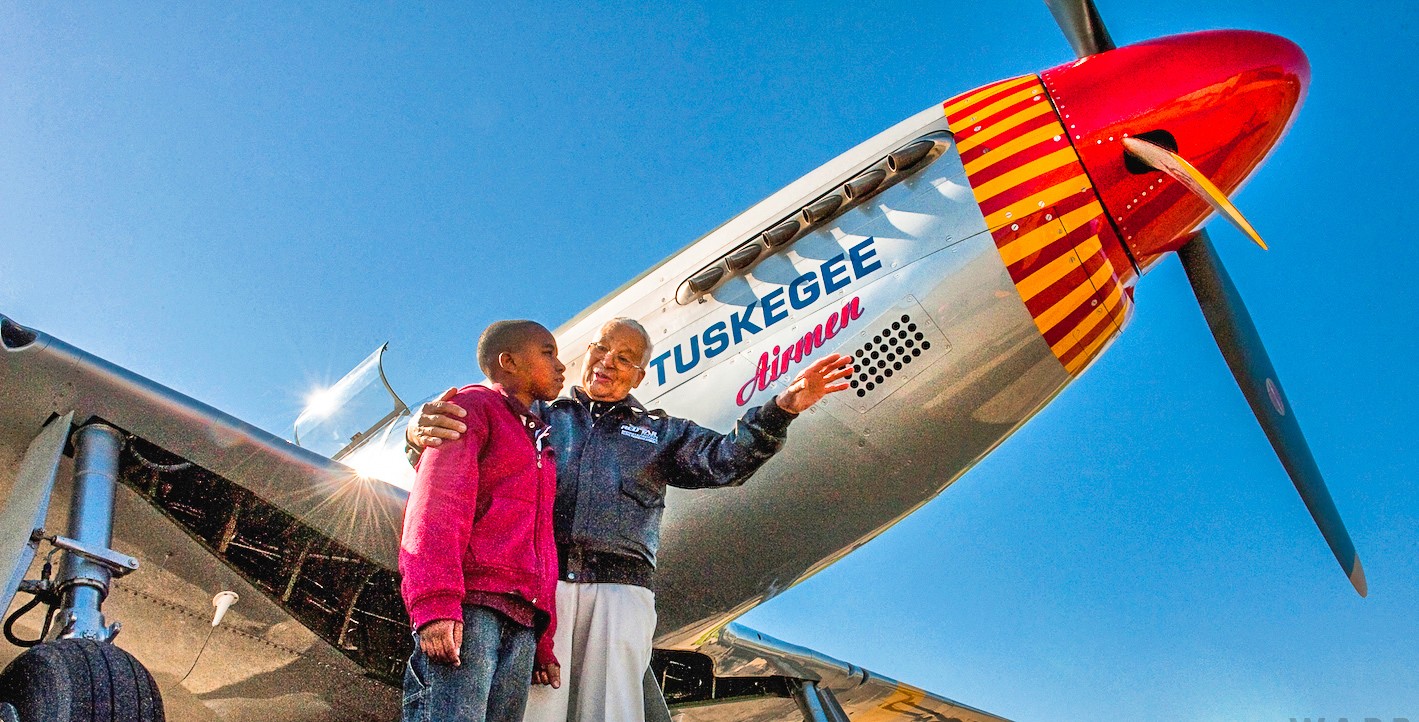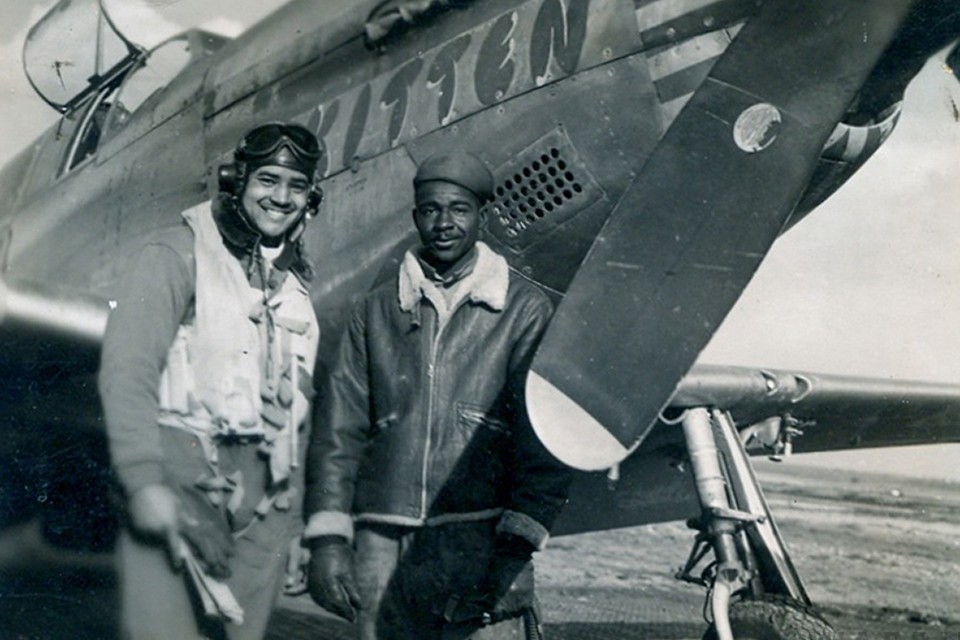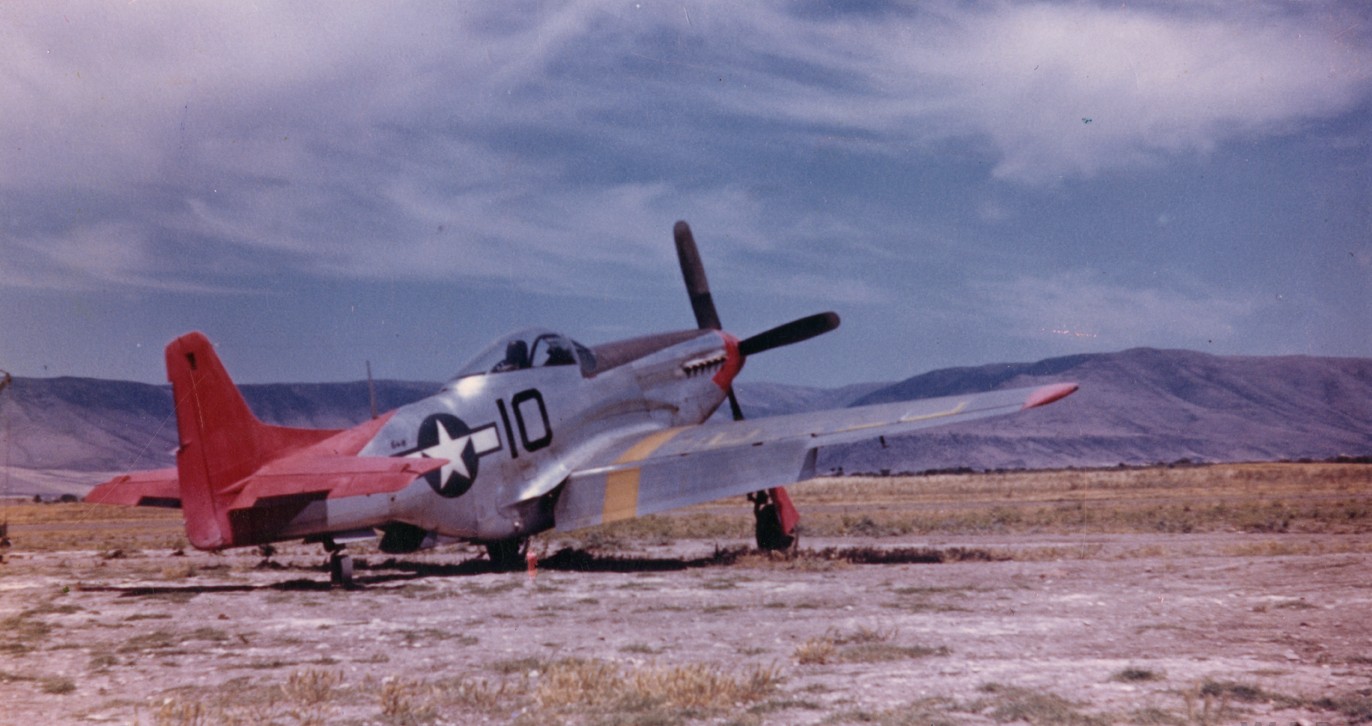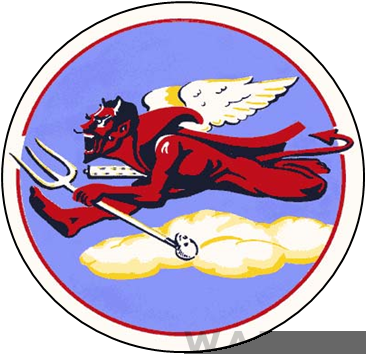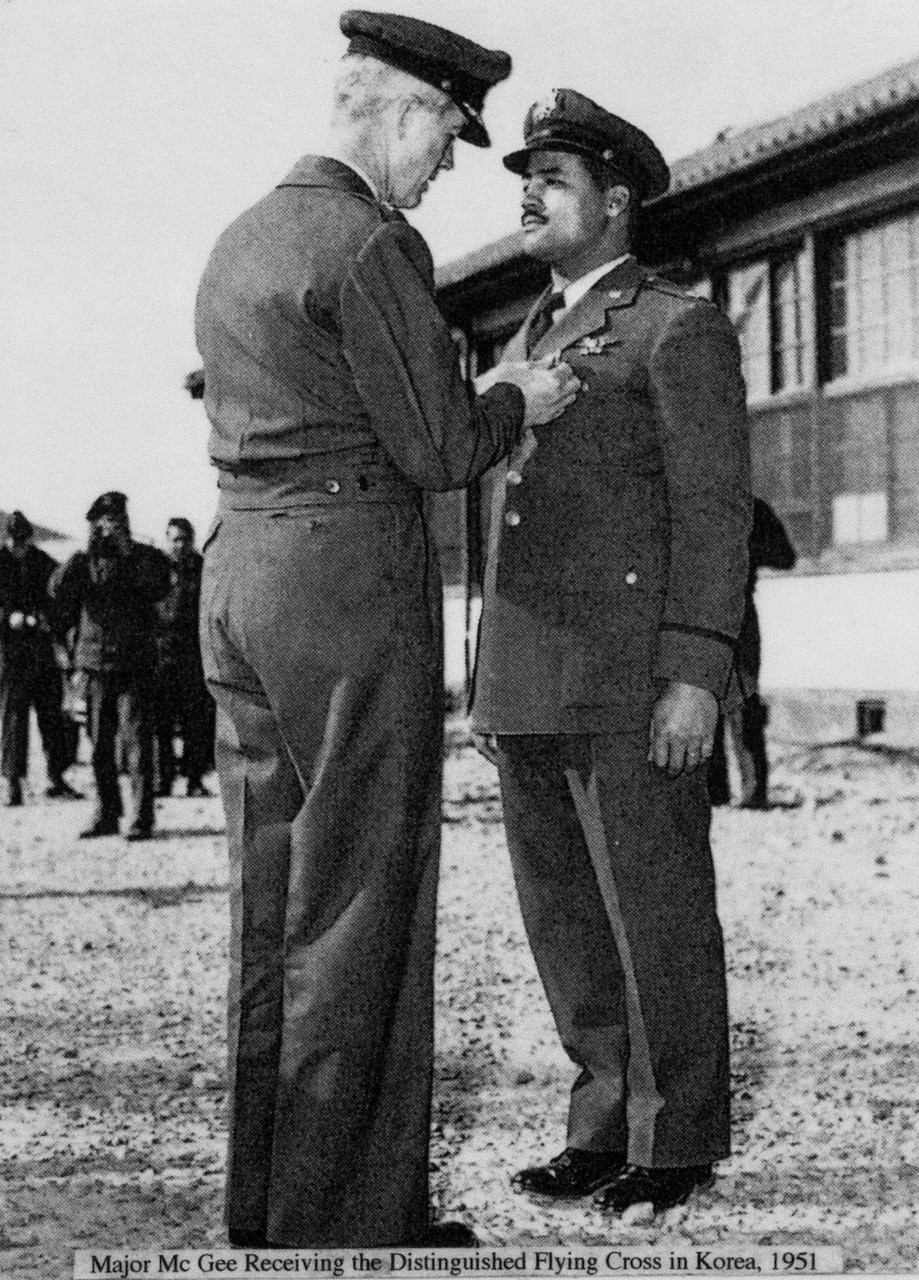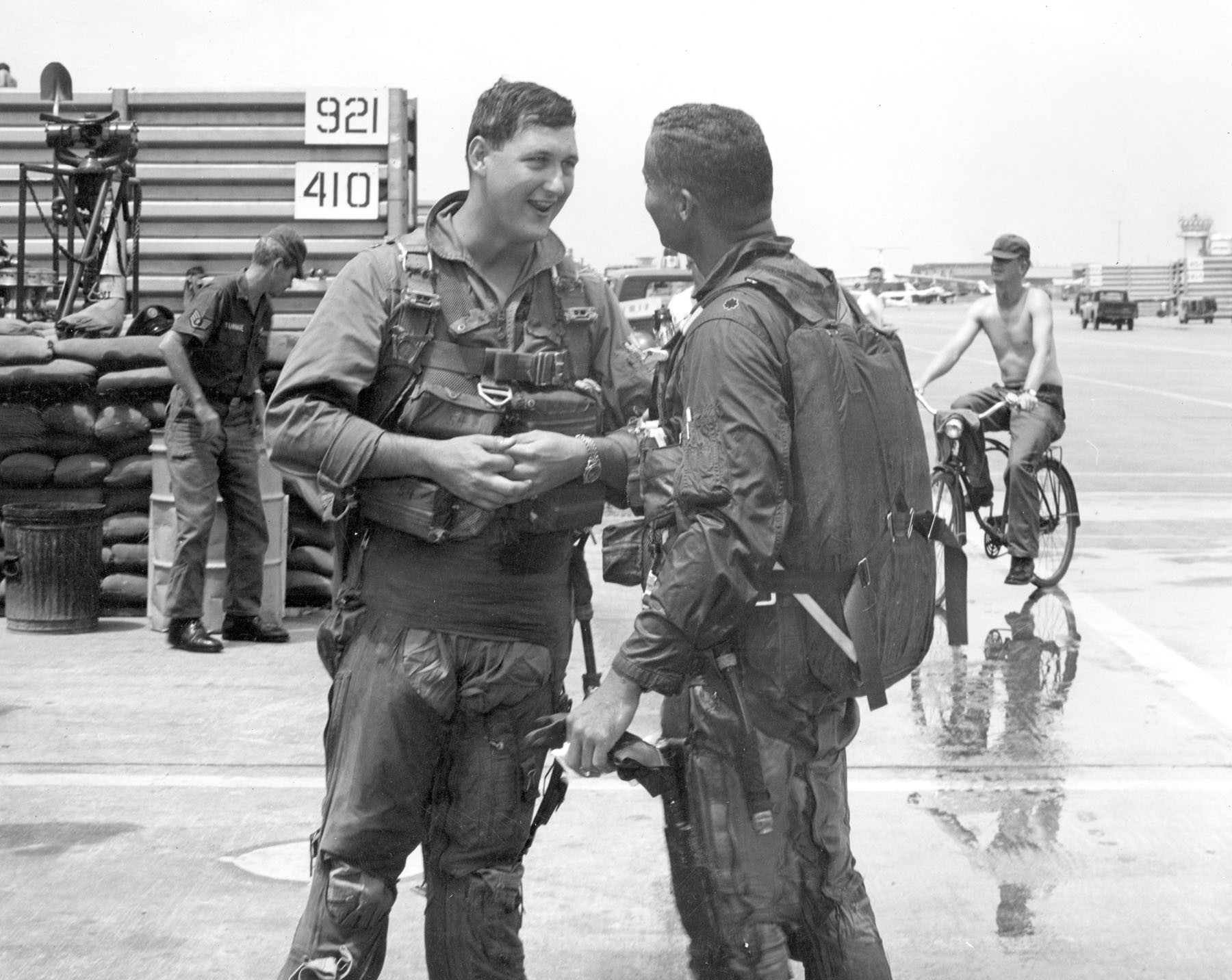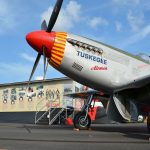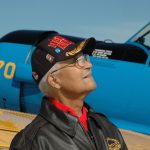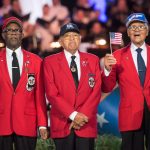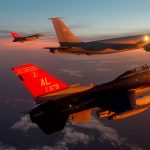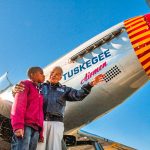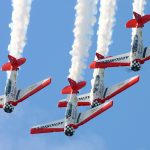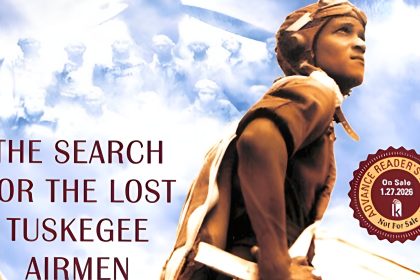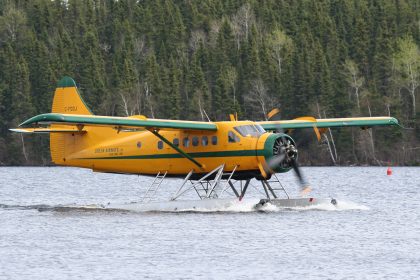We have sad news to report today, as early this morning we lost Brigadier General Charles Edward McGee, one of the last surviving members of the Tuskegee Airmen, the legendary group of African American aviators who fought to fly and defend the United States during WWII. Like all of those within this band of extraordinary heroes, McGee had to battle more than just the Luftwaffe to achieve his goals, but he did so with true grit and grace; or as he himself would have said, ‘by applying the four Ps’ – Perceive, Prepare, Perform, and Persevere.
Born on December 7th, 1919, McGee was a sophomore engineering student at the University of Illinois by the time of his 22nd birthday, the date when the Imperial Japanese Navy attacked Pearl Harbor and plunged America into the Second World War. McGee enlisted in the U.S. Army during October, 1942 and eventually found his way into flight training with fellow African Americans in the cadre which became known as the Tuskegee Airmen. While there isn’t room here to describe the immense struggle which the men and women within this famed group encountered in their efforts to serve their nation, all of those who eventually made it to the battlefields in North Africa and Europe had already overcome a far more insidious foe just to arrive there.
Charles McGee received his pilot’s wings when he graduated with Class 43-F on June 30th, 1943, but it wasn’t until February, 1944 that he found himself in the combat zone, stationed in Italy with the 302nd Fighter Squadron of the 332nd Fighter Group; he flew his first sortie on Valentine’s Day.
Charles McGee served in the Mediterranean Theatre for the next nine months, participating in nearly 140 combat missions, with many of these involving the escort of Allied bombers to targets in Germany, Austria and Yugoslavia. Other operations involved ground attack sorties against airfields and rail yards. He also downed a Focke-Wulf Fw 190 while escorting B-17s from the 5th Bombardment Wing on August 24th, 1944 during the bombing raid against Pardubice Aerodrome, about 70 miles due east of Prague in the present-day Czech Republic. McGee was one of three 332nd FG airmen to down an enemy fighter on that mission.
Of his time in Europe, McGee mentioned in a DoD article that his most memorable mission involved escorting transport aircraft over Yugoslavia, one of several such missions which took place during the war, to repatriate downed Allied airmen who had been safeguarded by partisans. Remarking on these efforts, McGee stated: “It was just wonderful to realize that the hundreds of Americans were able to get back home.”
By the end of November, 1944, McGee was on his way back home to the United States where he would become an instructor, training members of the 447th Bombardment Group to fly the B-25 Mitchell bomber.
Following WWII, McGee remained in the military. He saw further combat during the Korean War, flying 100 missions in F-51D Mustangs with the 67th Fighter Bomber Squadron.
During the Vietnam War, McGee commanded the 16th Tactical Reconnaissance Squadron at Tan Son Nhut Air Base, flying 172 missions in the RF-4 Phantom II.
He closed his combat career having flown a total of 409 sorties, spread across three different conflicts; an extraordinarily high mission count for any Air Force officer. McGee retired as a Colonel in January, 1973 having flown 6,308 hours in numerous aircraft types. He received numerous commendations during his career, and a ceremonial promotion to Brigadier General in 2020, a rank he should rightfully have attained during his military service given his vast combat leadership experience and hard-earned skillset.
Following his departure from the military, McGee returned to college to earn the degree interrupted by WWII. He stayed connected to aviation as well, and continued to fly even into advanced old age. He also devoted a lot of energy to encouraging younger generations to follow his example and live by the four P’s. In addition to his public service, Gen McGee will perhaps best be remembered for his trailblazing experience as a Tuskegee Airman, of course. Remarking on this time, he noted in a recent article for the DoD that his decision to join the Army Air Forces came partly from his desire to fly, but also because of the opportunity and freedom it represented. Regarding freedom, General Charles McGee noted:
“What freedom means to me is the fact that although there were those who said I couldn’t do something because of my happenstance of birth… Freedom provided the opportunity to serve and prove that it’s not just an idea for somebody to tell you can’t do something — it also requires the endeavor from yourself, that yes I can. And it’s in freedom that you get the opportunity to prove that you have abilities. They can be developed to not only help you as an individual, but what it means in the area of business, jobs and opportunities — you can’t beat it. Freedom is the key to providing such opportunity for one and all.”
Charles McGee followed these ideals during his entire adult life, and worked publicly to encourage others to do so too. We are lucky for the example he provided, one worth emulating…
Fair winds and blue skies General McGee.







